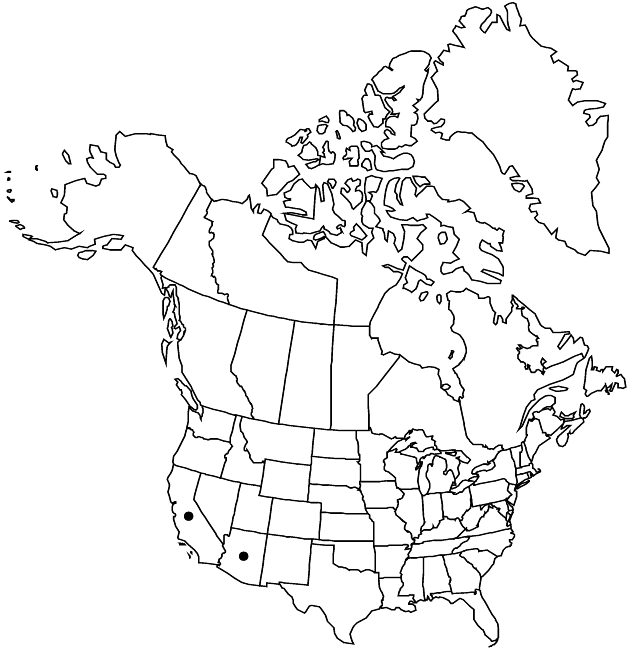Baileya pauciradiata
Mem. Amer. Acad. Arts, n. s. 4: 105. 1849.
Plants mostly 20–75 cm. Leaves: basal leaves (not persistent) mostly 5–12 × 0.5–1 cm; petioles often indistinct; blades linear-oblanceolate to oblanceolate, sometimes pinnately lobed; cauline leaves linear, seldom lobed, often not reduced distally. Heads in loose, cymiform arrays. Peduncles 2–5 cm. Involucres campanulate, mostly 5–8 × 5–8 mm. Phyllaries mostly 8–13, floccose-tomentose. Rays mostly 5–7; laminae elliptic to ovate, mostly 5–8 × 4–6 mm, apices shallowly to indistinctly 3-toothed. Disc-florets mostly 10–20; corollas 2.5–3 mm, tubes 0.4 mm, lobes 0.25 mm; style-branch apices truncate. Cypselae 3 mm. 2n = 32.
Phenology: Flowering Mar–May.
Habitat: Sandy soils, deserts
Elevation: 60–700 m
Distribution

Ariz., Calif., Mexico (Baja California), Mexico (Sonora)
Discussion
The most distinct species of the genus, Baileya pauciradiata has the most limited distribution and is, perhaps, the least abundant.
Baileya pauciradiata also possesses cytotoxic sesquiterpene lactones, namely odoratin and paucin (J. J. Hoffmann et al. 1978).
Baileya pauciradiata is connected to the moth Schinia pallicincta Smith, which is closely related to the species of noctuid moth that inhabits B. multiradiata. Schinia pallicincta occupies mostly sand dunes of southern California and uses B. pauciradiata as a primary feeding source (T. G. Myles and B. F. Binder 1990).
Baileya pauciradiata has occasionally been found growing with or near B. pleniradiata; natural hybrids between them have not been recorded, nor have synthetic crosses been successful (R. C. Brown 1974). Brown supported the genetic isolation of the species from the other taxa by demonstrating complete barriers to gene exchange.
Selected References
None.